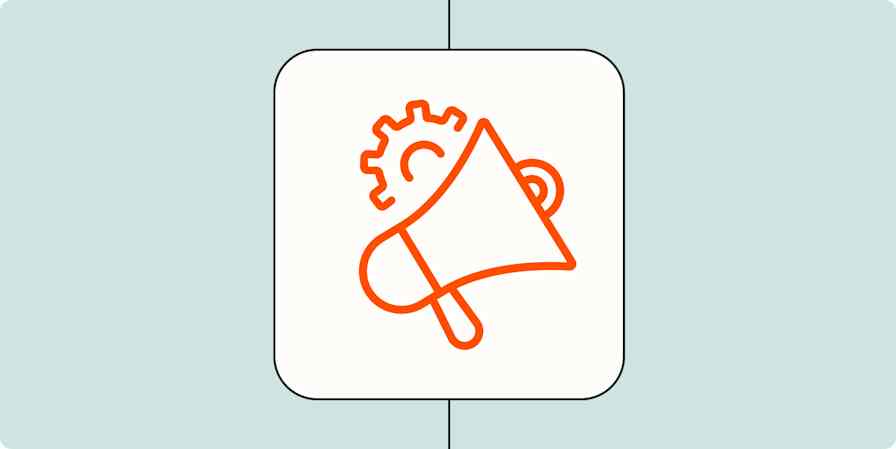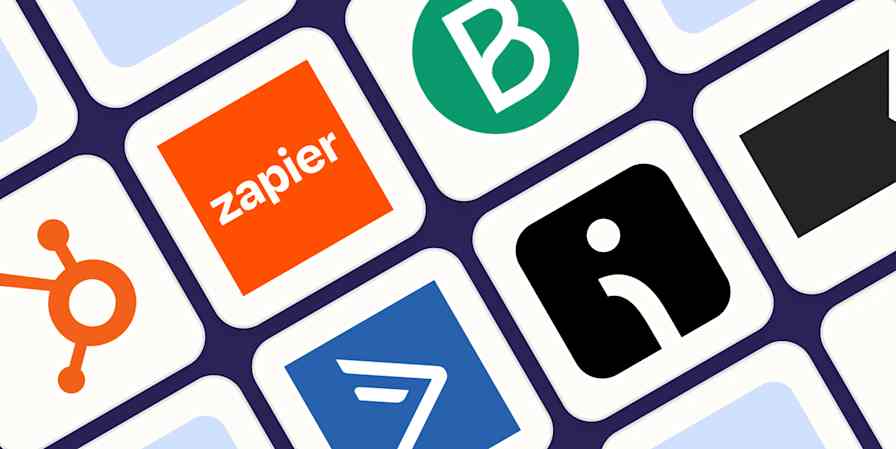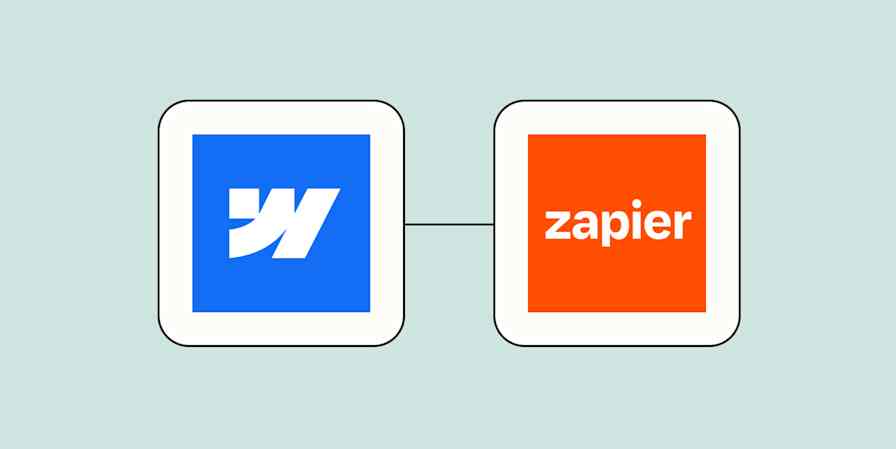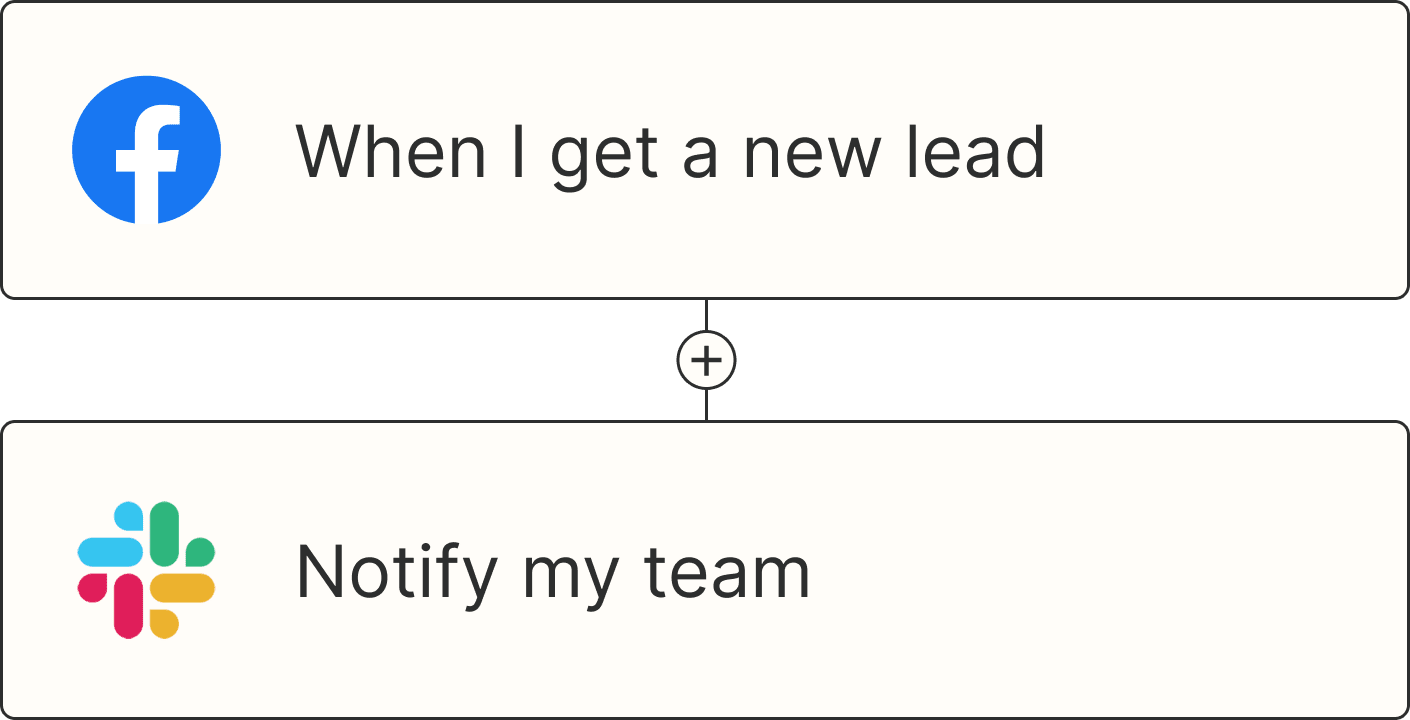Marketing automation is a powerful tool that can either amplify your marketing efforts or amplify your mistakes. The difference often comes down to understanding what to automate, what guardrails to put in place, and how to balance automation with human oversight.
We talked to marketing teams who've learned these lessons the hard way, with the hopes that you can skip the oops moment yourself and go straight to the tactics that work. Here are seven marketing automation strategies that failed, why they didn't work, and what you can do instead to avoid the same pitfalls.
Table of contents:
Trying to automate the personal touch in campaigns
Sarrah Pitaliya, VP of Marketing at Radixweb, used to think of personalization as something to just check off her list. And that's exactly what led to her marketing automation mistake.
Sarrah was setting up an automation for post-webinar follow-ups. She used Zapier to pull attendee data from Zoom and trigger a series of emails in their CRM. "We went through our laundry list of personalization—first name, company name, industry mention, etc.," she says. "But what we didn't think about is that everyone knows an automated email when they see one. So even though the webinars were successful, we didn't get any responses from our follow-ups. Just because people realized that it was an automated campaign."
They quickly learned that automation alone can't build connections.
"The problem wasn't Zapier. It did its job perfectly," she continues. "The problem was that we tried to take humans out of a step that actually needed a personal touch. Now, we still use Zapier to handle the boring parts like syncing attendance lists and sending the initial thank-you. But the real follow-up is written by our team. That mix works much better."
You can also use a human-in-the-loop step to meet in the middle: AI automations can draft the follow-up messages, but then you can pull a human in to review, edit, and approve before it gets sent out. Learn more about how to add human-in-the-loop steps to your marketing automations.

Forgetting about edge cases
Benas Rukavišnikovas, Marketing Manager at Eneba, set up an automation to automatically add UTM tags to every link—that way, they could track every click.
But, Benas says, "it backfired because it didn't discriminate: it overwrote links that already had carefully set parameters. As a result, ads, affiliate links, and partner campaigns all got 'restamped,' which broke attribution and pushed revenue into the '(other)' bucket."
As someone deep in the world of content metrics, I know how terrifying that "other" bucket is.
But it was an easy fix. Once they spotted the issue, they just made the rule smarter: now it only adds UTMs if none exist and ignores specific sources that should never be modified.
Your marketing automation platform should easily let you add rules for your edge cases. Filter by Zapier, for example, ensures that your automations only run when you want them to. Or you can build a Zapier Agent that knows to only proceed under certain conditions.
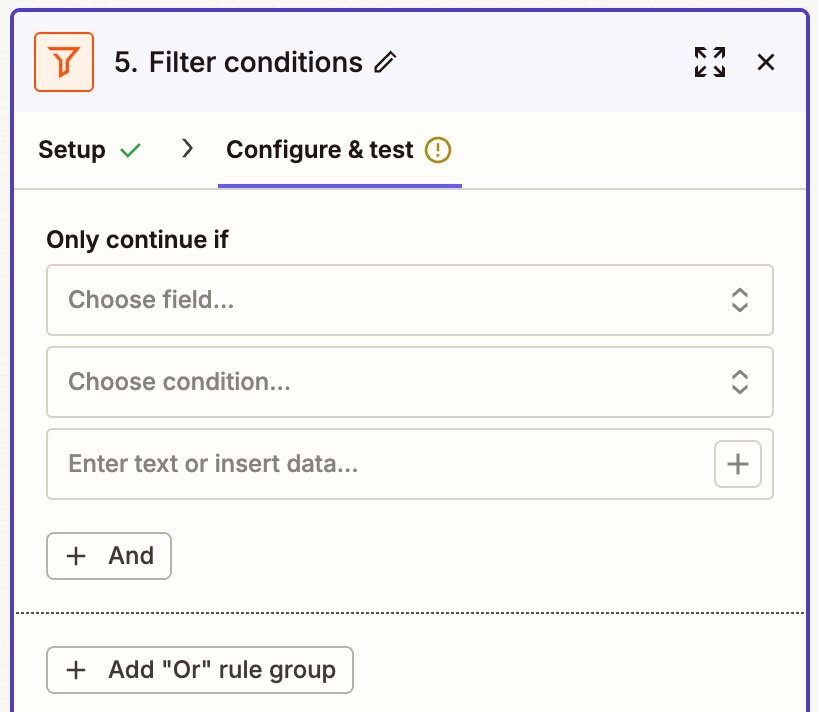
Automating reputation management
Review outreach and reputation management are areas where you definitely need to tread lightly. As Luke Marsh, CMO of Innago explains: "Our support and sales teams have received high ratings and reviews because they reach out personally to dissatisfied customers, hear their concerns directly, and respond authentically." He continues: "Trying to automate parts of this process just led to impersonal responses and often increased frustrations rather than reducing them."
Because reputation management isn't about speed or efficiency, he relies on his team members to demonstrate empathy and relationship-building. Of course, that doesn't mean not automating any part of the process. "Automation helps us flag negative reviews and track metrics around them," he says, "but manual outreach ultimately led us to better results in customer satisfaction and retention."
So even if you don't automate actual customer conversations, Zapier can help with the behind-the-scenes work. Set up workflows to automatically flag negative reviews from platforms, then route them to your customer success team for personal follow-up. This gives you the speed of automation with the authenticity of human response.
Here's a template you can use to get started.
Improve customer satisfaction by collecting and responding to reviews in one place with the help of AI.
Getting complacent
Automation means hands-off, but that doesn't mean you can just set it up and forget it exists. Shawn Byrne, CEO of My Biz Niche, explains: "While automation is made to make things easier for us, it's always good to conduct routine check-ups if you don't want to set yourself up for failure."
For example, one of Shawn's team members lost dozens of leads after a tiny change in the field form broke the connection: "Because they got complacent, they didn't notice it until it was too late."
"We use Zapier, and so far, we haven't had a similar experience," Shawn says. "It keeps workflows consistent and builds workflows that keep the data moving." And because they check the logs, even when there is an automation hiccup, they're able to catch it.
Zapier's built-in monitoring features and audit logs can help you stay on top of your automations. Set up email notifications for failed Zaps, build custom error handling, and review your task history to regularly review what's working and what isn't.

Not branching automations
Colton De Vos, Marketing Specialist at Resolute Technology Solutions, made the mistake of creating an automation without considering the need for branching.
"In theory, all website leads should enter the funnel into the appropriate sales stage based on which form they have filled out, which email they've answered, or otherwise what stage of the buying cycle they engaged with content," he says. "In practice, our nice, clean CRM was suddenly getting filled with low-value, non-lead based contacts, organizations, and deals based on people trying to contact us through our website forms."
To adjust, they created a separate pipeline of website-created deals and branched the automation—and they also added a human check before website "leads" joined the actual sales cycle. "This allowed us to maintain the automation without the clutter of non-sales related activities joining the mix of activities and complicating the data," he says.
You can use Zapier Paths to create separate branches within one automation. For example, you could use the same trigger—a website form submission—but set up rules that route high-intent leads directly to your sales team while sending general inquiries to a separate pipeline for qualification. This keeps your CRM organized and your sales team focused on qualified prospects.
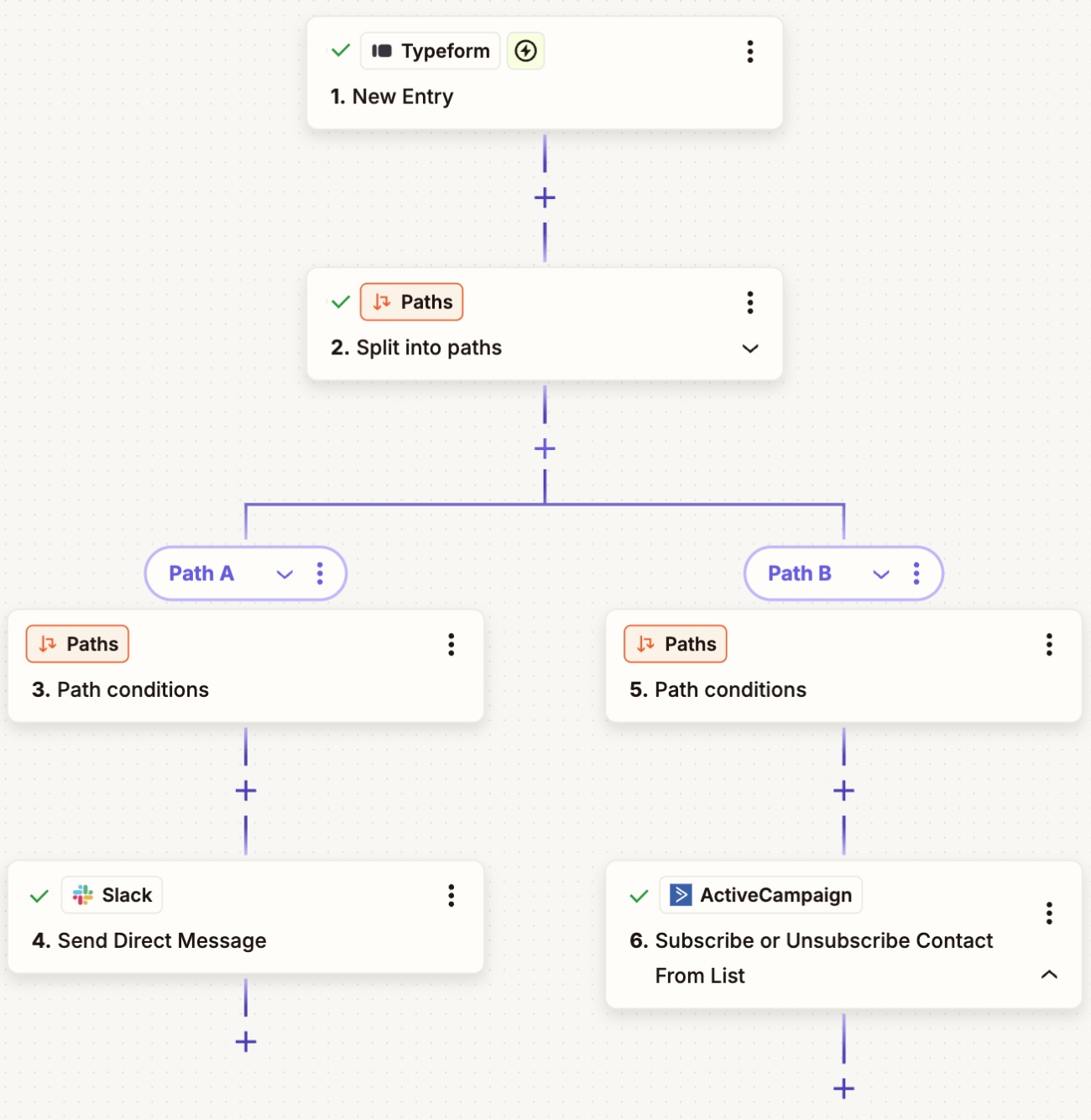
Going programmatic without oversight
Austin Heaton, Head of Content at Rise, led a sprint that automatically generated thousands of long-tail pages for programmatic SEO.
"On paper, it appeared efficient," he says. "In reality, we published thin, templated content that missed search intent and overlapped across URLs. Google discovered approximately 8 million pages but crawled only about 650,000, which indicated serious quality issues."
What failed? "Generic modules, weak data sources, and zero safeguards," according to Austin. "The system produced near-duplicate pages that added no value to users."
Austin "halted mass publishing, reconfigured the generator to require unique data for each page, and implemented a validation step that blocks output without fresh, verifiable inputs." He also "added manual review on a rotating sample, mapped templates to specific intents before any build, and established recurring audits to prune and refine the content."
For content operations at scale, Zapier can help you build quality checkpoints into your workflow. Create automations that flag content for human review based on specific criteria, or set up approval processes that require manual sign-off before publishing. This helps you maintain quality while still benefiting from automation.

Automation-induced information overload
Leigh McKenzie, Community Advocate at Traffic Think Tank, set up an automation that moved all of their marketing-qualified leads from HubSpot into a shared Slack channel. "It was a great idea in theory to get everyone real-time updates, but it quickly became a spam monster," Leigh says. "With more than 300 notifications coming in every week, the channel became noise, and our sales team muted it, going contrary to our initial intention of having visibility."
To address the issue, they set up a daily digest with Zapier. "Now the system provides one well-structured summary with essential lead information once a day," he says. "This change brought back clarity, made the channel useful again, and provided the sales team with a streamlined means of staying focused on quality leads without being overwhelmed with notifications."

Information overload is real, so use Digest by Zapier to batch notifications and reduce notification fatigue, while still keeping your team in the loop.
Move from automation to orchestration
The best marketing automation setups aren't about doing everything automatically. They're about doing the right things automatically—in the right way. Successful automation depends on thoughtful design and regular human oversight. When built well, it gives teams more space to focus on strategy, creativity, and customer connection.
Zapier serves as an AI orchestration platform that can help teams implement these lessons at scale. By connecting your existing tools and building intelligent workflows with built-in checkpoints and humans in the loop, you can create AI-powered automation systems that support your marketing campaigns and help you find new opportunities.
Related reading:

